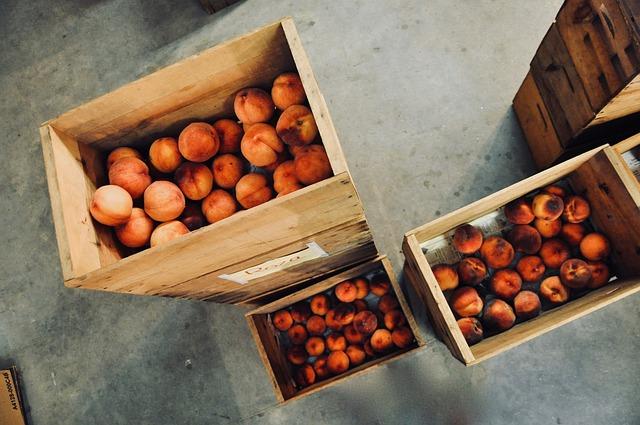In the quiet corners of our homes, tucked away in dusty albums and forgotten shoeboxes, lie the silent witnesses of our family’s history—old photographs that capture the laughter, love, and legacy of those who came before us. These fragile remnants of the past hold the power to bridge generations, evoking memories of shared stories around the dinner table and the gentle wisdom of grandparents. Yet, time has a way of fading these precious images, threatening to blur the faces and erase the moments that define our heritage. As we embark on this journey to preserve our family photos, we embrace the responsibility to protect these irreplaceable treasures, ensuring that the stories they tell continue to resonate in the hearts of those who will follow. Let us explore the best ways to safeguard these windows into our past, treating each image with the care and reverence it deserves, as we weave together the tapestry of our family’s enduring narrative.
Safeguarding Memories: Understanding the Importance of Photo Preservation
In the hustle and bustle of daily life, it’s easy to overlook the fragile beauty captured in old family photos. These images hold the echoes of laughter, the warmth of gatherings, and the silent stories of those who came before us. To ensure these memories remain vivid for future generations, understanding the nuances of photo preservation is essential. By taking thoughtful steps, we can shield these cherished pieces of our history from the relentless march of time.
- Choose the Right Storage: Opt for acid-free photo albums or storage boxes. These materials prevent yellowing and degradation over time.
- Avoid Direct Light: Store photos in a cool, dark place. Light, especially sunlight, can fade and damage images irreversibly.
- Digitize for Backup: Scanning and storing digital copies not only preserves the images but also makes sharing them with family members a breeze.
- Handle with Care: When touching photos, use clean, dry hands or cotton gloves to avoid oils and dirt transferring onto the delicate surfaces.
- Control the Environment: Maintain a stable environment with moderate temperature and humidity levels to prevent mold and warping.

Gentle Touch: Handling and Cleaning Techniques for Fragile Photographs
When dealing with delicate photographs, it’s essential to approach them with a gentle touch. Begin by ensuring your hands are clean and dry; consider using cotton gloves to avoid transferring oils and dirt. Handle photographs by their edges, minimizing direct contact with the image surface. This practice helps preserve the integrity of the photograph and reduces the risk of damage.
For cleaning, use a soft, anti-static brush to gently remove any dust or debris. Avoid using liquids or sprays directly on the photos, as they can cause irreversible damage. Instead, opt for a microfiber cloth slightly dampened with distilled water for stubborn spots. Always remember:
- Keep photographs away from direct sunlight and extreme temperatures.
- Store them in acid-free albums or boxes for long-term preservation.
- Label storage containers clearly to prevent unnecessary handling.
By following these careful handling and cleaning techniques, you’ll ensure that your treasured family memories are preserved for future generations to cherish.

From Analog to Digital: The Art of Digitizing Your Family Treasures
In the delicate dance between time and memory, our family photos hold stories that transcend generations. Transitioning these cherished memories from fragile analog to enduring digital forms can feel like a daunting task, yet it offers a profound opportunity to preserve your family’s legacy. Embracing this journey not only safeguards these treasures from the ravages of time but also opens up new ways to share and celebrate them with loved ones. Here are some creative approaches to ensure these visual heirlooms remain vibrant for years to come:
- Professional Scanning Services: For those who prefer a hands-off approach, professional services offer high-resolution scans that capture every nuance of your photographs. This method ensures quality and often includes options for restoration.
- DIY Digitization: With a good quality scanner or even a smartphone, you can digitize your photos at home. Tools like photo editing software can help enhance and repair images, bringing old photographs back to life.
- Organize and Archive: Once digitized, organize your photos into folders by date, event, or family member. Use cloud storage solutions to keep them safe and accessible, ensuring they’re preserved for future generations.
By thoughtfully transforming these snapshots of time, you’re not just preserving images; you’re safeguarding the essence of your family’s history. It’s an act of love that connects past, present, and future, allowing stories to be told and retold with vivid clarity.

Creating a Safe Haven: Storage Solutions to Protect Your Precious Images
As we delve into the troves of memories captured in old family photos, ensuring their safety becomes a cherished mission. These snapshots, each a fragment of time, deserve a sanctuary where they can endure the ravages of time. Embrace the journey of creating a safe haven for these precious images by considering a blend of traditional and modern storage solutions. First, archival-quality photo albums and acid-free storage boxes are quintessential for protecting physical prints. They prevent fading and deterioration by shielding photos from harmful elements like light and moisture.
In this digital age, scanning your photos and saving them in high-resolution digital formats serves as a vital backup strategy. Consider using cloud storage services for their added layer of protection and accessibility from anywhere. For those who cherish the tactile experience of leafing through a photo album, creating digital photo books can merge the best of both worlds. Here are some practical steps to ensure your images are stored safely:
- Use archival sleeves to protect individual photos from dust and fingerprints.
- Keep physical photos in a cool, dry, and dark environment to minimize exposure to damaging elements.
- Regularly back up digital copies on multiple platforms to safeguard against data loss.
- Consider using metadata to label and organize your digital collection for easy retrieval.
By adopting these strategies, you not only preserve the physical and digital integrity of your family photos but also keep alive the stories and emotions they encapsulate for generations to come.


